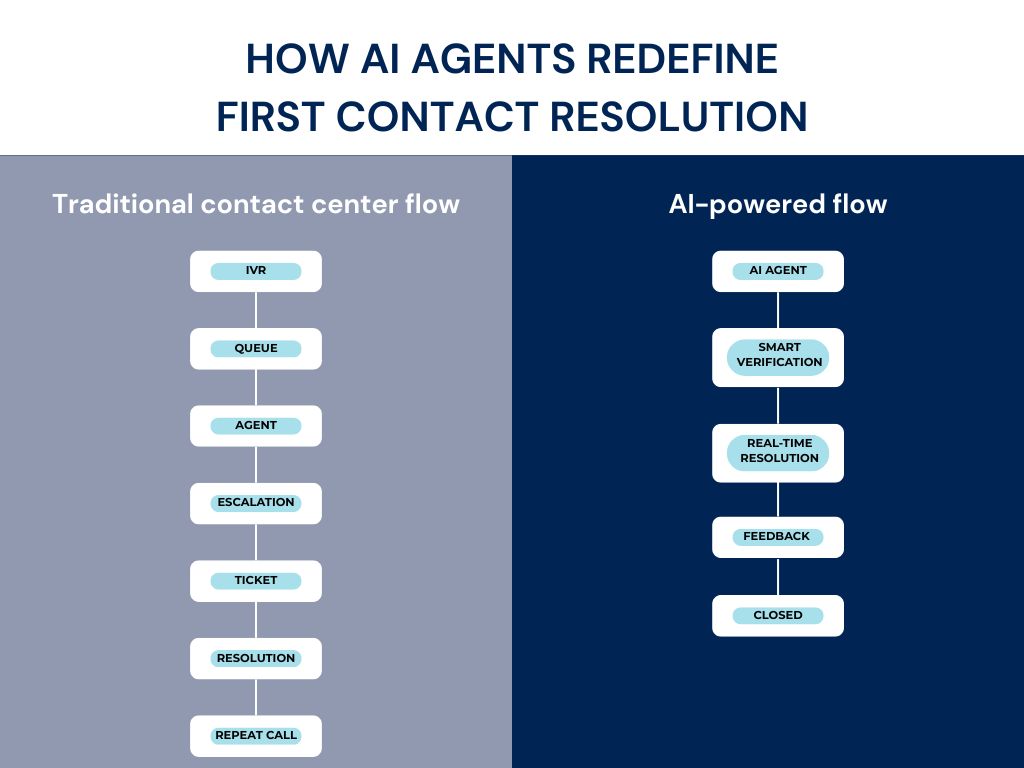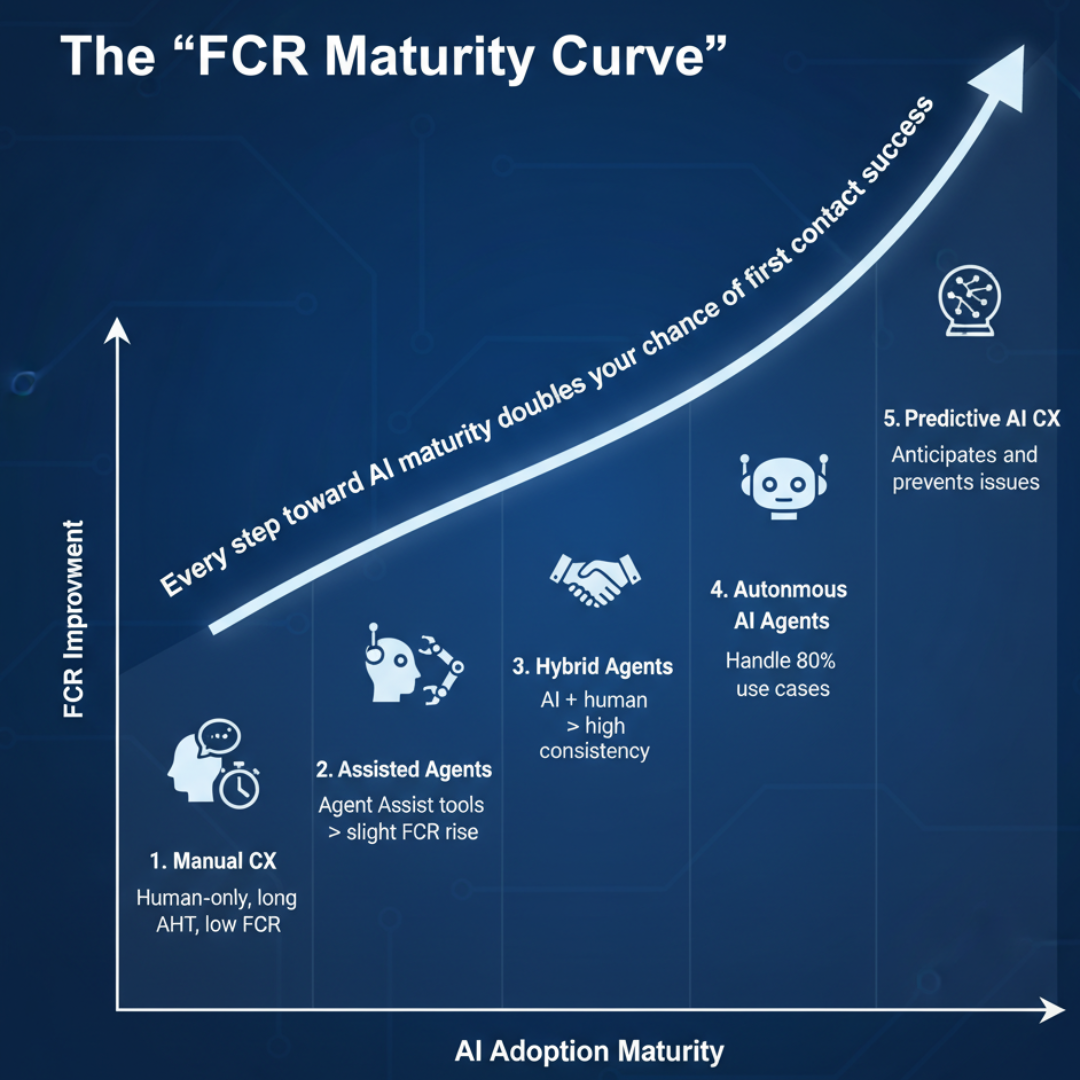

Customer - I am facing the problem with my internet connection
Agent - I am sorry to know that but I will try my best to get it sorted
And then there is a series of verification, keeping the customer on hold and from time to time saying sorry for the long hold, I am checking with the back end team. And finally the agent says - I am creating a ticket and our team will get back to you.
Customer - Huh! So the issue did not get resolved and triggered the start of the customer dissatisfaction.
“In fact, over 60% of customer support calls end without resolution in the first interaction, according to SQM Group.”
First Contact Resolution (FCR) is a benchmark for effective customer service. It is the ability to resolve the customer’s issue in the very first interaction.
FCR is often correlated directly with CSAT and customer loyalty — every 1% improvement in FCR can lead to a 1% rise in customer satisfaction and up to 5% cost savings for the contact center.
While brands and customers are desirous of a high level of FCR but still this remains elusive.
Lets not try to give a Yes or No answer. Let us analyze what hinders in getting a high level of FCR.
Sure, there can be more reasons attributed to lower FCR and it can be different from business to business or in different sectors.
The irony is that most of these challenges stem from system limitations, not agent intent - making them perfect candidates for AI augmentation.
AI agents are automated systems which can respond to customer queries over phone calls, chats or even emails. These are powered by LLM and RAG (Knowledge base). With proper system prompts, and tooling (to get/post data from back end system) the AI agents can complete the tasks quite autonomously.
Lets review the same parameters and see how AI agents score against them.
Apart from the above points, AI agents can be consistent, polite and have context awareness from past interactions and it can retrieve customer data in real time
| AI Capability |
Impact on FCR |
| 24x7 Availability |
Removes off-hour delays |
| Skilled AI Agent |
Ensures skill-based match instantly |
| Smart Verification (OTP, Biometrics) |
Reduces pre-resolution time |
| RAG-powered Knowledge Access |
Improves accuracy of first response |
| Continuous Learning |
Keeps improving over time |
| Consistent Communication |
Reduces friction from human mood/variability |
For example, a leading e-commerce brand using AI chat agents saw a 32% improvement in first contact resolution within 3 months, primarily by automating refund and delivery-related queries.

This is an evolving discussion and it will become more clear with time. In customer service, the Pareto principle applies. This means that 80% of the calls are usually repetitive and not very complex whereas 20% of the calls or conversations are complex in nature. So the AI agents can be best used for the 80% of the calls - less complex and repetitive. For more complex calls the AI agent can do a hand off to live agents.
Instead of replacement, think of it as role evolution: AI handles the repetitive 80%, while human agents handle the nuanced 20% — with AI providing context, summaries, and recommendations.
Also the role of live agents can evolve to supervisor agents. Live agents can realtime monitor the quality of conversations and if it is not going as expected, they can jump into the call instead of waiting for it to be forwarded. This we call the Human agent in loop. This approach will further improve the FCR and provide customer delight.
This hybrid model not only ensures empathy where needed but also provides real-time quality control - where human agents can intervene before dissatisfaction escalates.
AI agents are becoming multi modal that means it can call, chat and email so that the customer engagement is enriched. Example - the AI voice agent can request the customer to send the invoice copy or photo of the damaged product delivered. Once the image is received it can analyze the image or extract the content and then decide the next steps. If the product is damaged and the invoice is genuine, it can initiate a refund or arrange the pickup of the damaged product.
Can you visualize how the FCR will be improving with time?

The approach to use AI agents can be broken into some simple steps:
The future of contact centers will have AI agents and live agents working in tandem and assisting each other. This will start improving FCR which inturn will lead to happier customers and a leaner team. In future, such smart conversational AI agents will ensure every first contact is the last contact needed.

Contact Center, Productivity, Innovations
4 Effective Ways To Enhance Profit In Contact Centers

Contact Center, Dialer, Omnichannel, Productivity
5 Ways Predictive Dialers Make Outbound Contact Centers Successful

Customer Experience, Contact Center
5 Ways Customer Interaction Improves Your Business In 2025